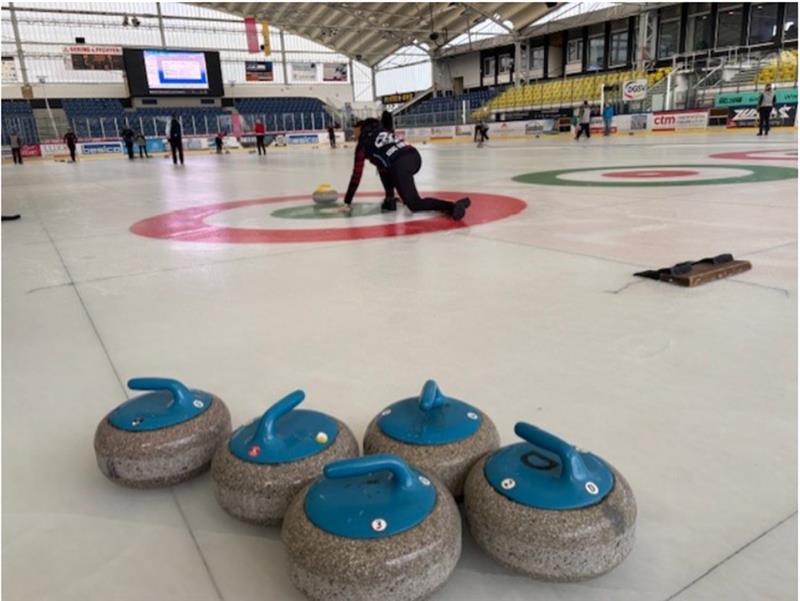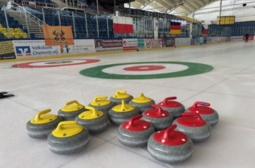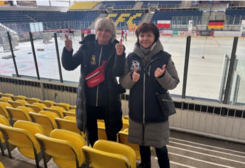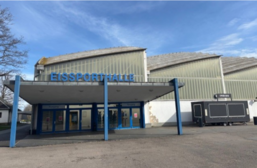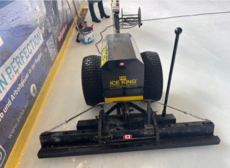Volunteers for Chemnitz 2025 publish reports on their experiences, assignments and adventures around the European Capital of Culture.
Gabriele is 61 years old and works as a customer advisor. She lives in Schlosschemnitz and enjoys doing her bit for her home town. This is why she can be found volunteering at various events, which she then writes about for the volunteer editorial team.
and
Kerstin is 59 years old and works as an office communications clerk. Born in Burgstadt, she is present as a volunteer at various Chemnitz 2025 events; among other things, she initiated the countdown to the Capital of Culture year together with Lord Mayor Sven Schulze and other guests.
What were we thinking when we signed up to volunteer on the volunteer page, because our alarm clock rang at 5.30 am on Sunday, as our work in the ice rink started at 7 am on the dot!
We had only seen curling on television, so we were excited to see what was in store for us.
On the Thursday before the tournament, we had a briefing in the ice rink. The tournament organiser and the treasurer of the Chemnitz Curling Club took a lot of time for us, even though they were busy with the competition. We were given information about the history of curling, the tournament schedule, our tasks and all our questions were answered in detail. We were really integrated into the “curling gang” and we had the feeling that our support was very much needed.
The competition started at 8am on Sunday. Together with the ice master, we were responsible for the playability of the ice surface. First, a layer was planed off with the ice machine and we had to sweep away the excess surface, hold the electric cable of the ice machine, smooth the ice rink with large mops and let the tokens glide over the rink. Only then was the rink ready for the competition. This procedure was repeated during every break in the competition and we were now almost perfect "ice master assistants"!
During the competition, we had free time and could watch the game. Chemnitz was the last of three tournament weekends this year. The ECoC Curling Cup took place for the 21st time and the final tournament was also held in Chemnitz. The curling department of the CEC (Chemnitz Ice Skating Club) is the organiser as part of the official Capital of Culture programme, together with the curling clubs of Trutnov (Czech Republic) and Swidnica (Poland), where the first two tournaments took place.
Curling is particularly popular in Canada, where it is a national sport. Two teams, consisting of four players and a substitute, always play against each other. Each player has two stones (these stones are made of polished granite and must weigh exactly 19.96 kg) so that eight stones per team are played on the ice during a round, alternating between the two teams. Only stones that remain in the house (i.e. in the coloured circle) or touch the house (the outermost ring) are counted. The counting is done in such a way that all stones that are closer than the nearest of the opponent's stones are counted. Each team uses a different colour so that the audience can see who owns the yellow or red stones, for example, and so the current game situation can be easily read. As five rinks fitted onto the ice surface, 10 teams were on the ice at the same time.
